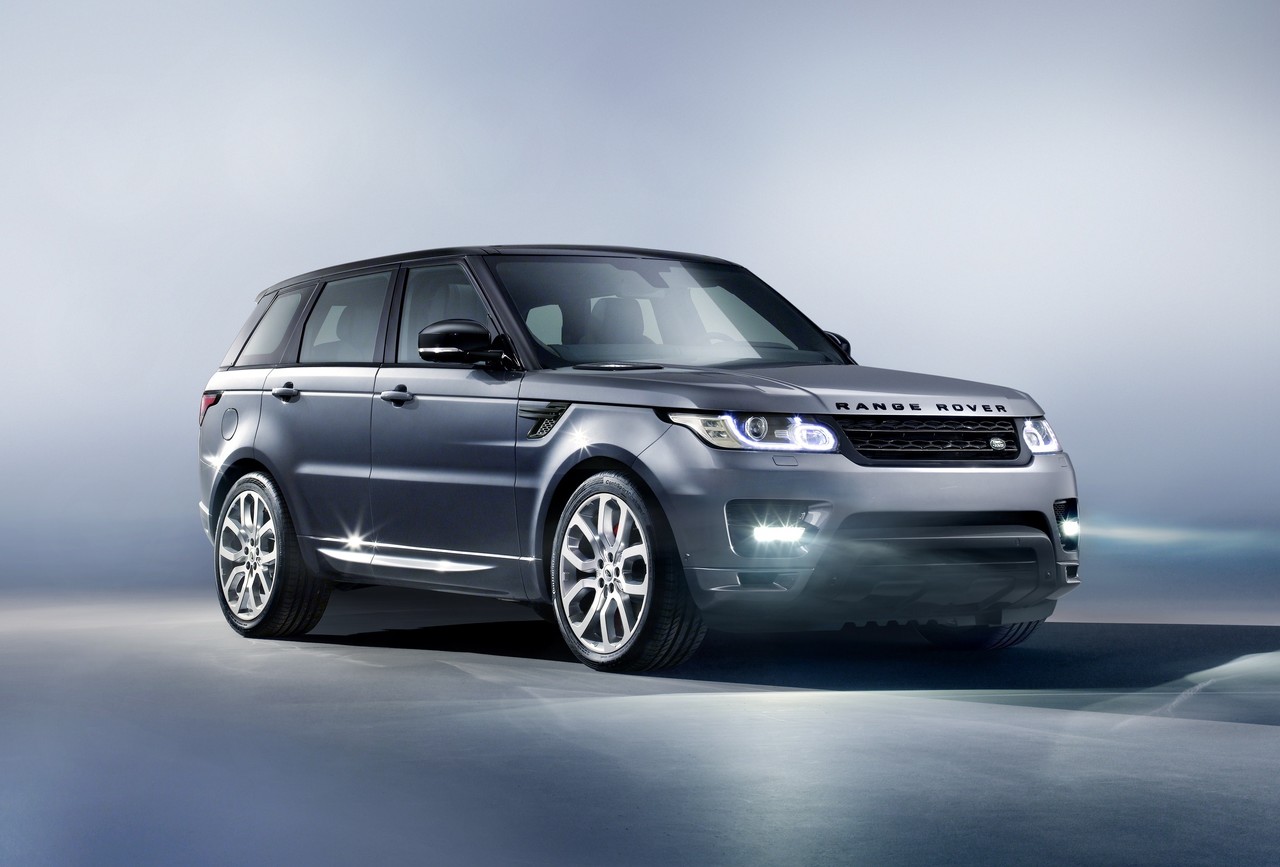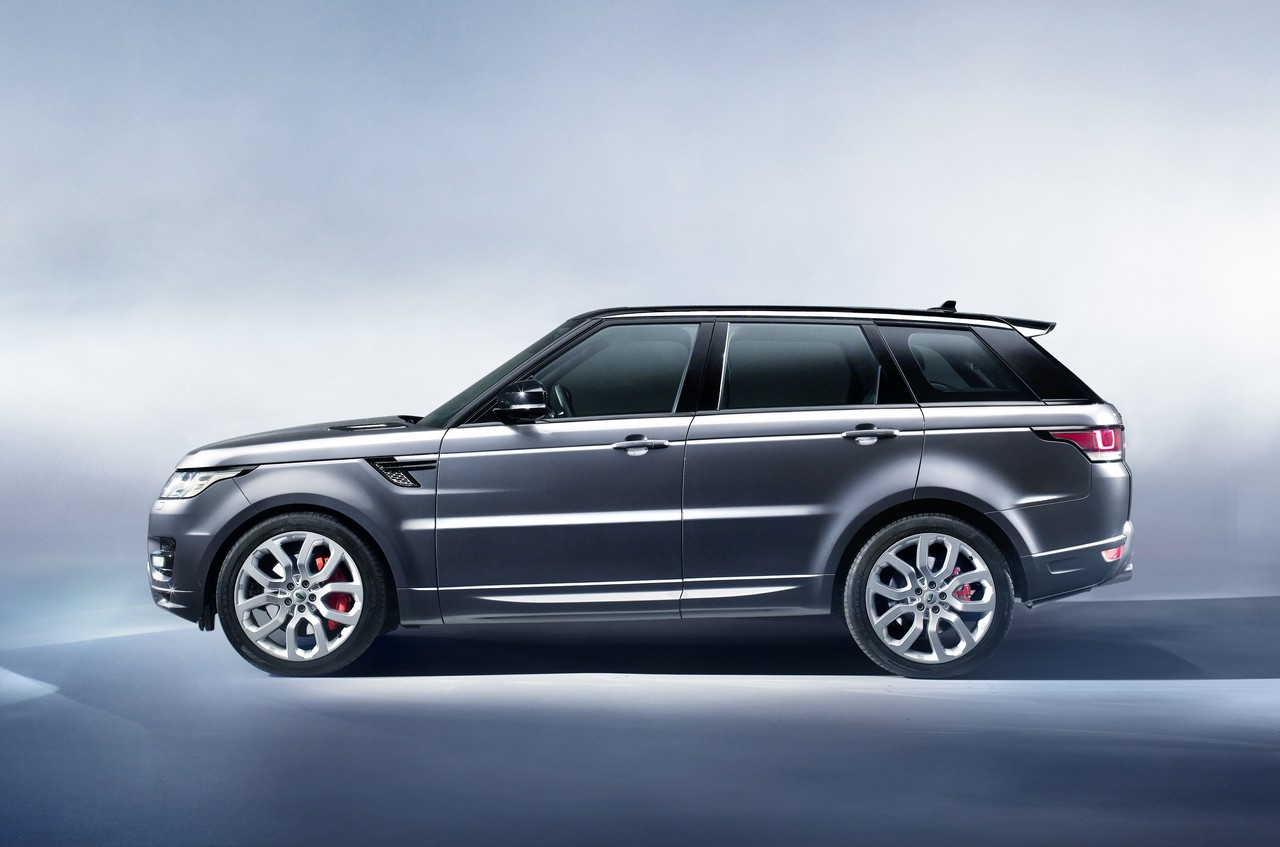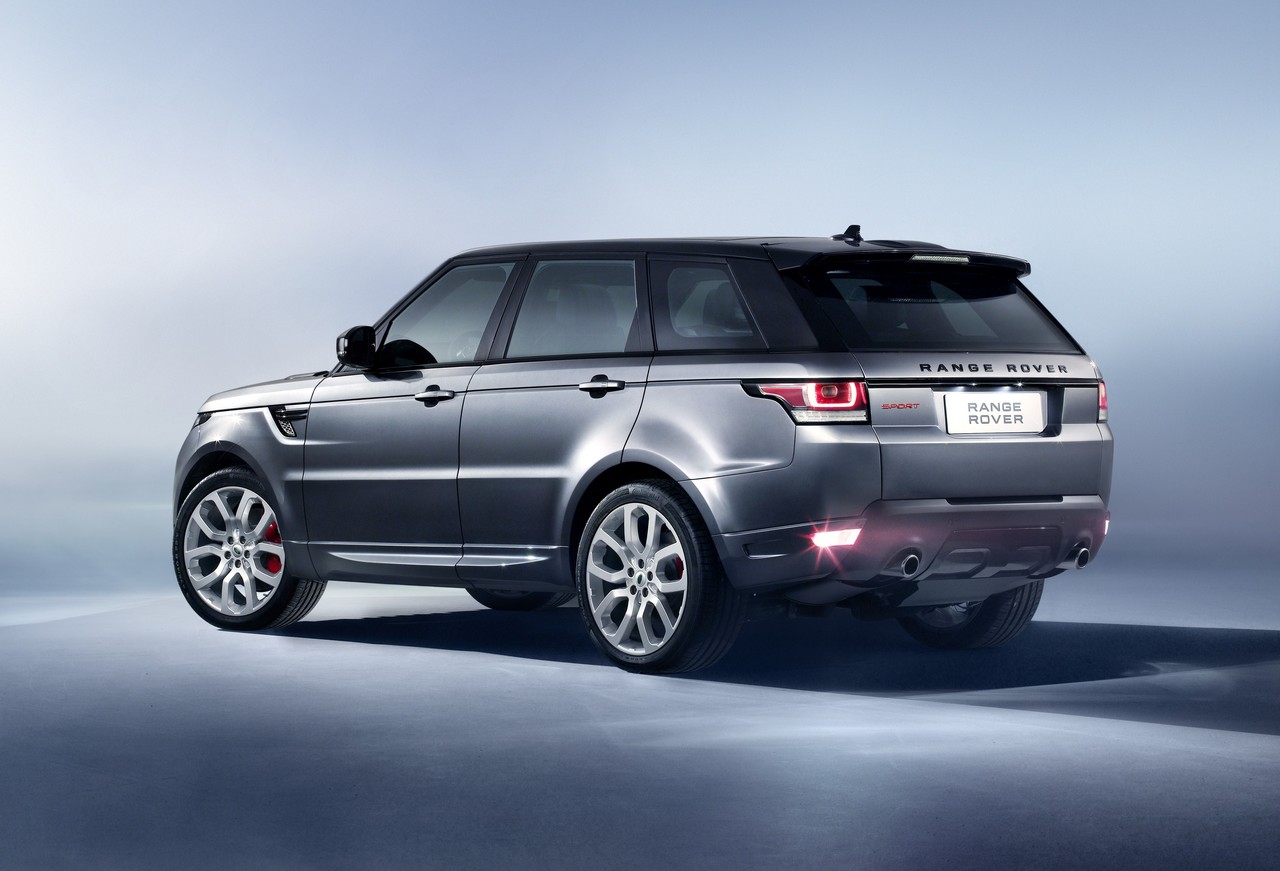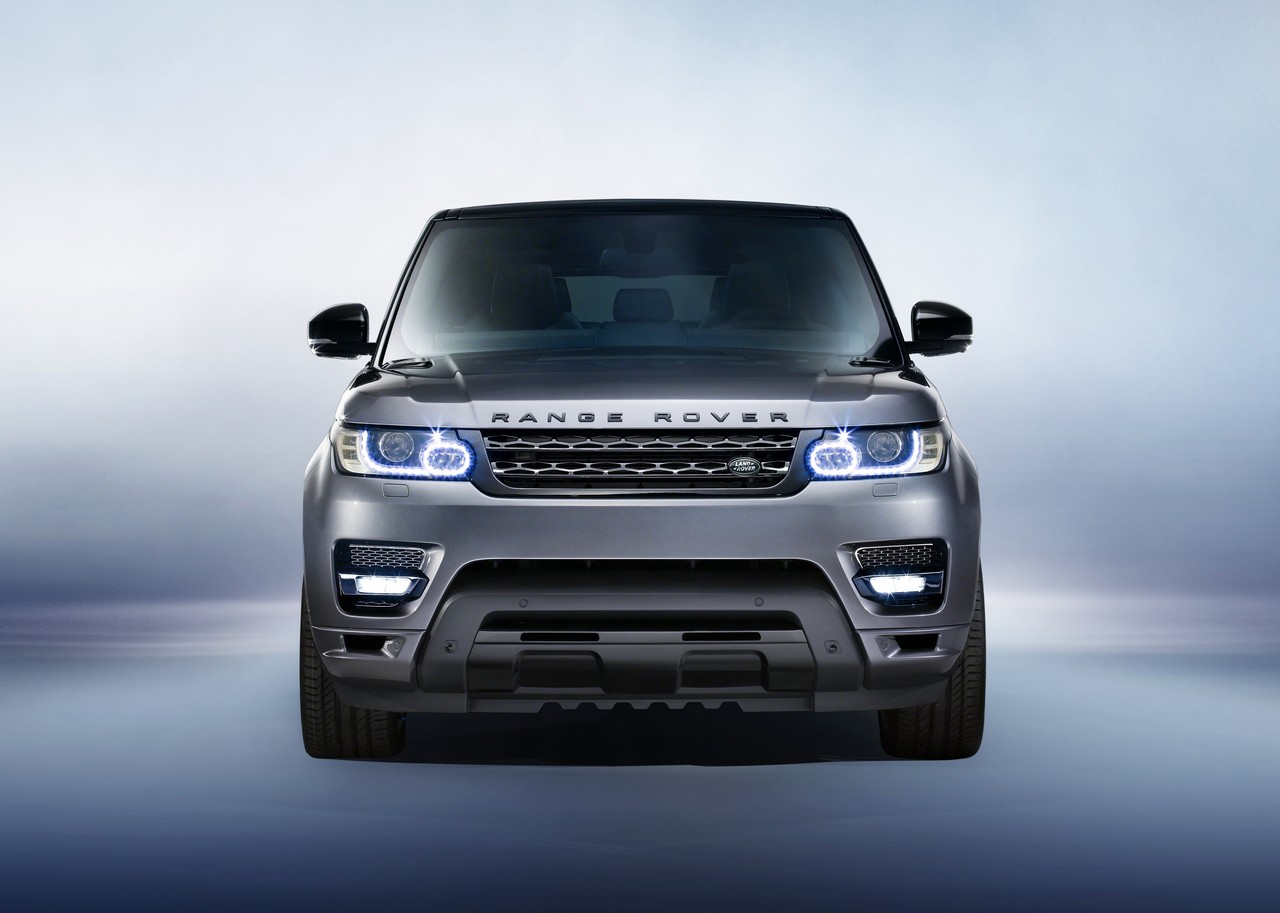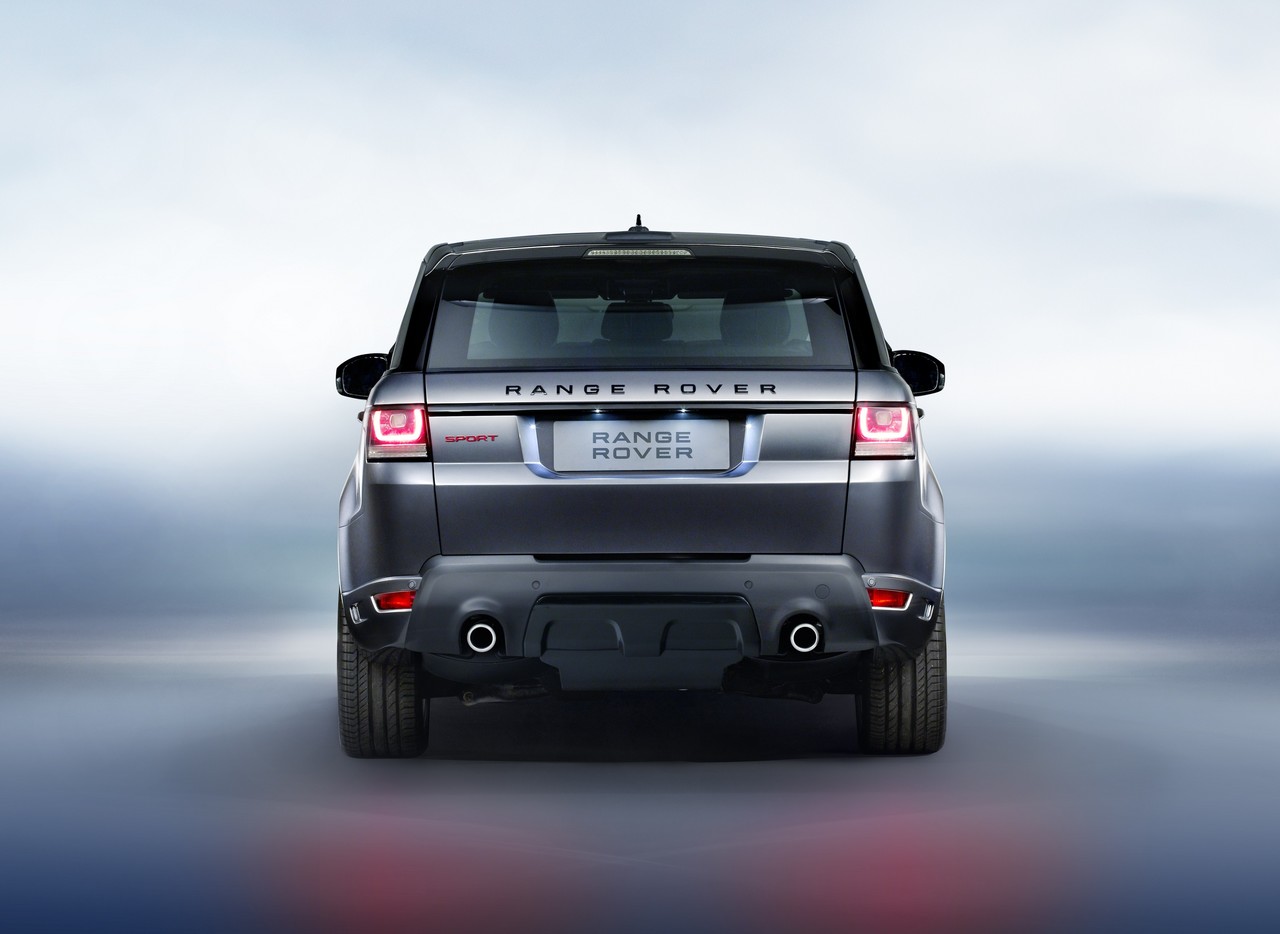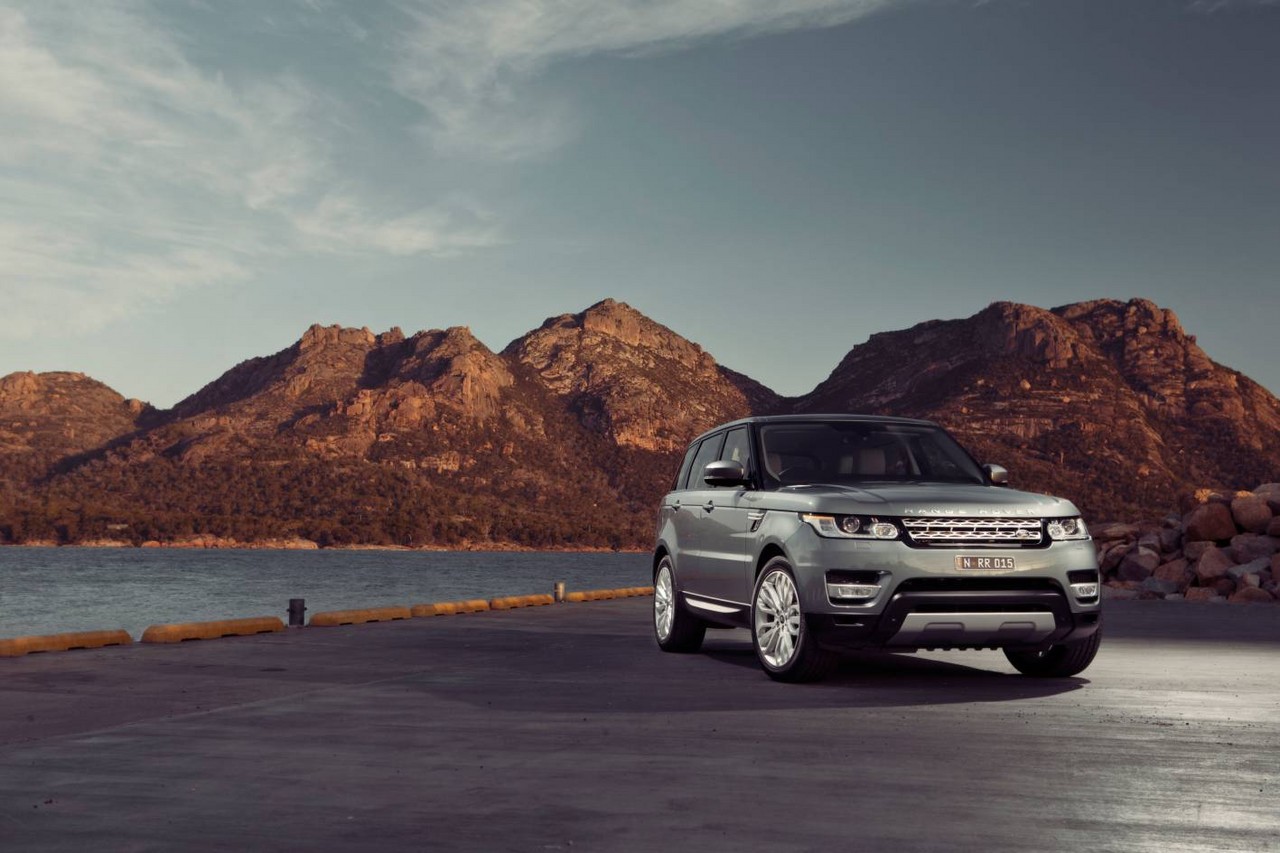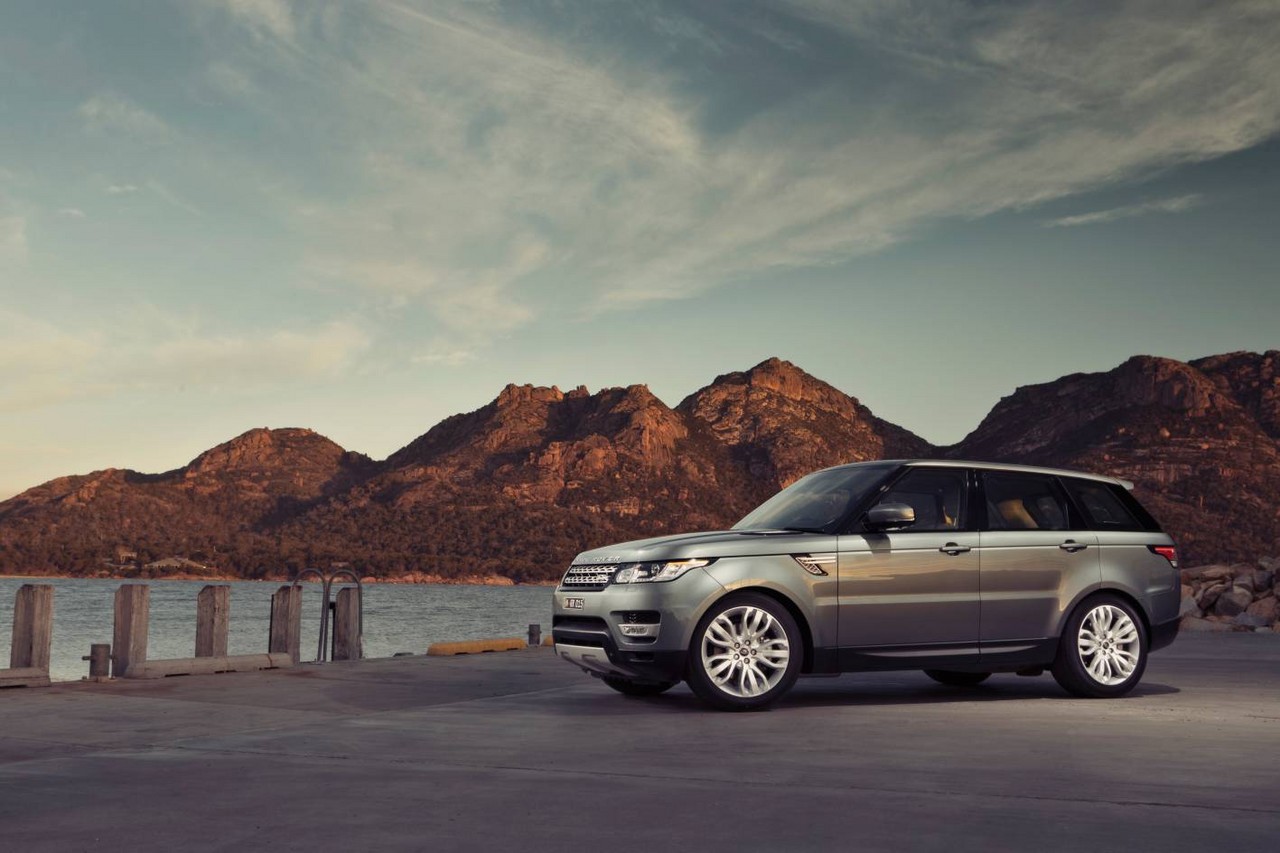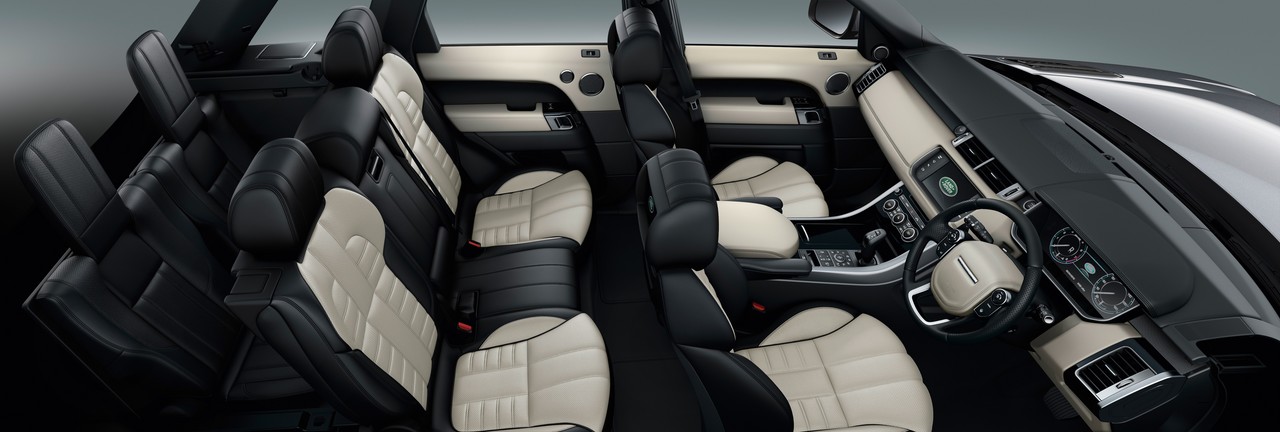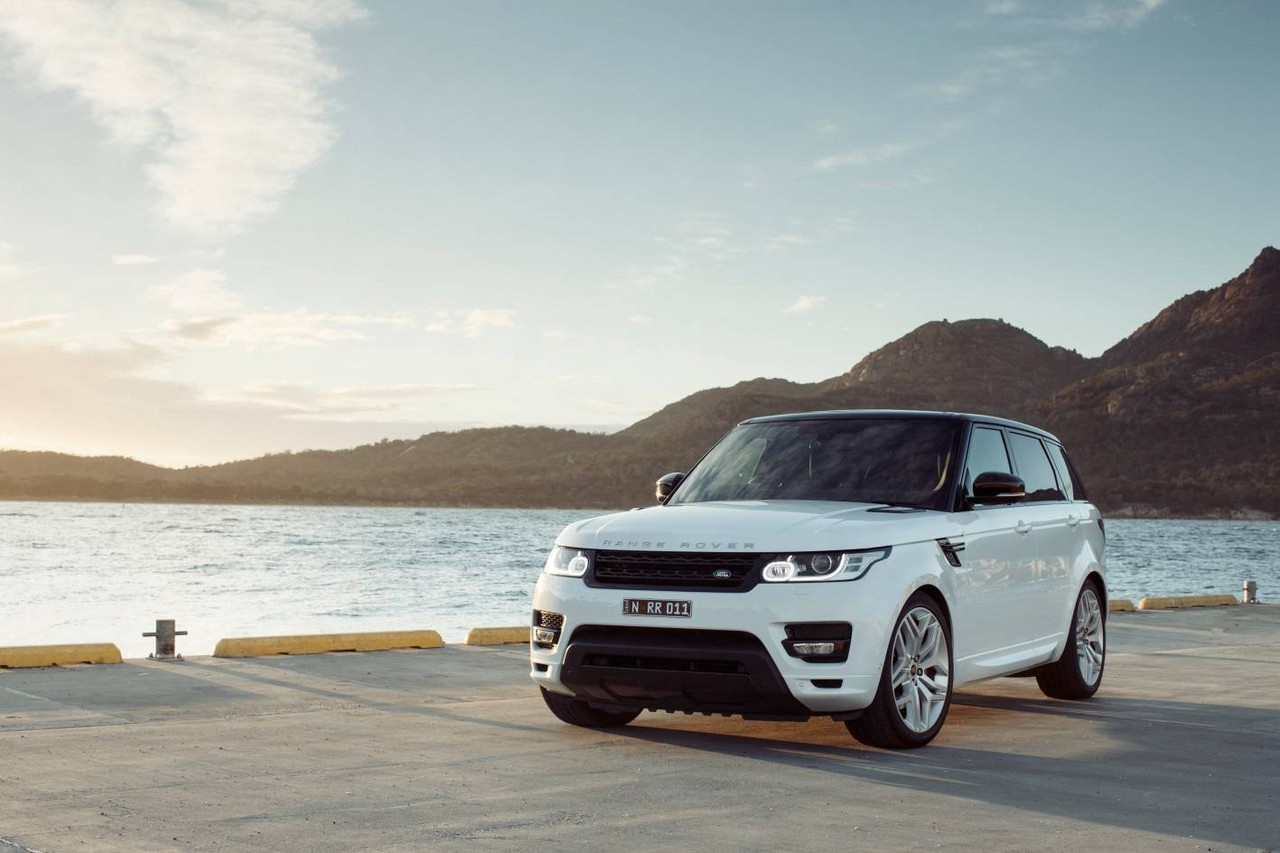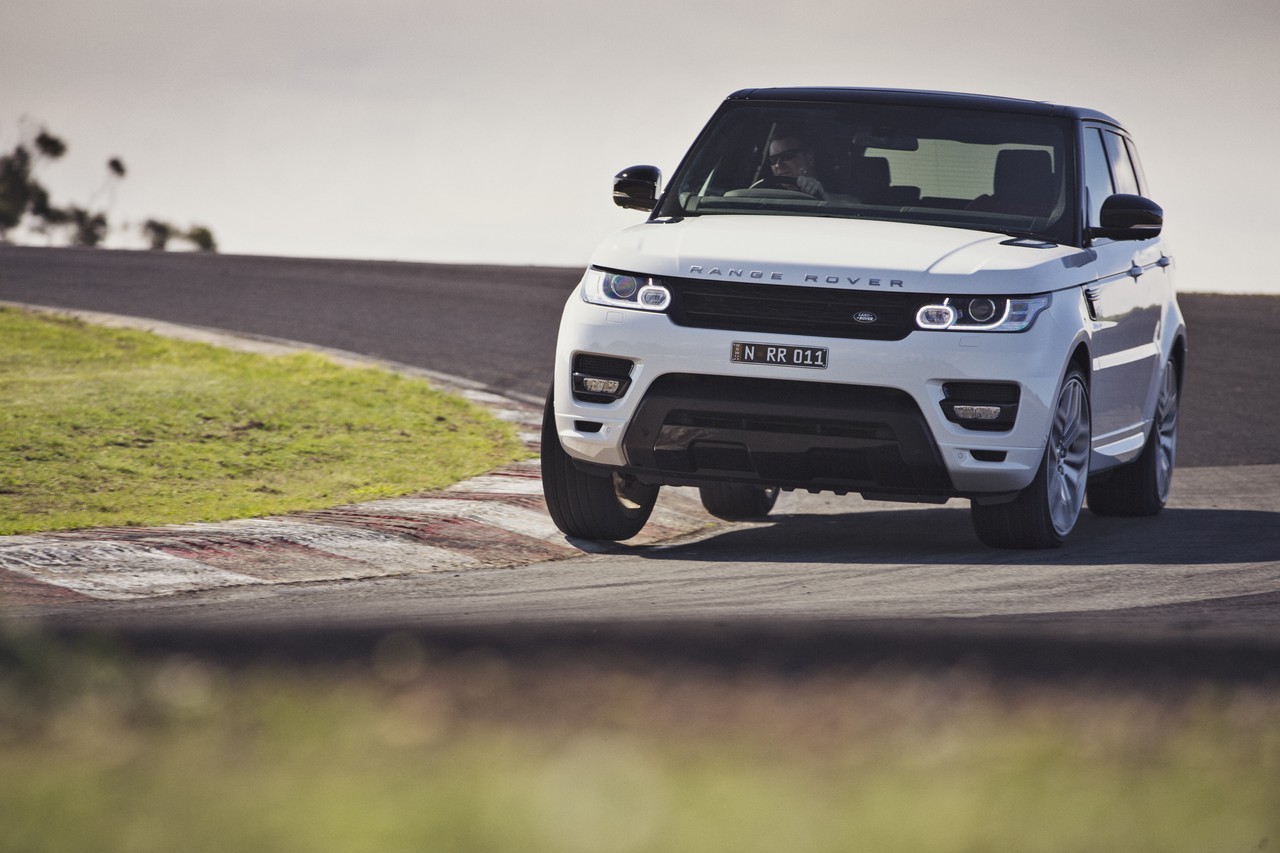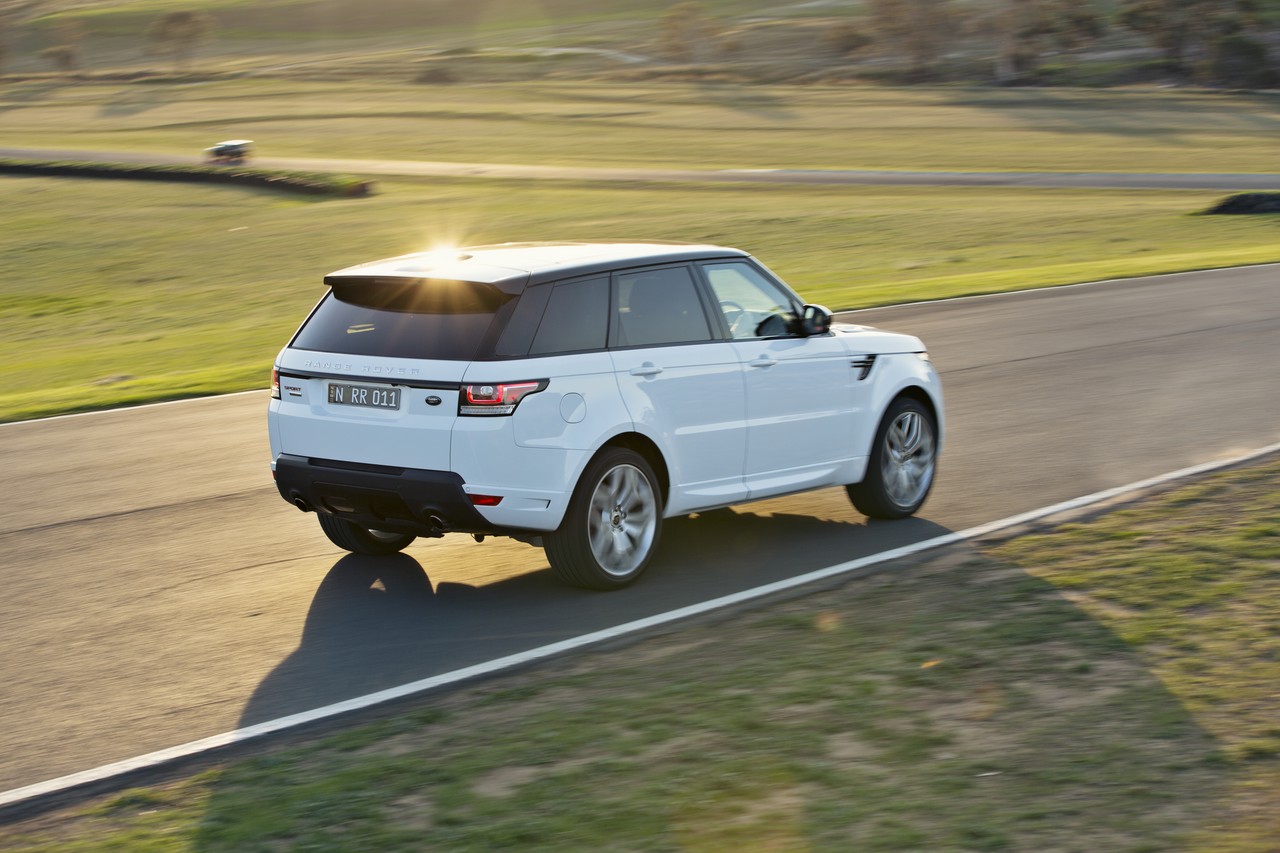
- Responsive turbo-diesel engines
- Supportive front seats
- Comfortable ride and competent dynamics
- High standard of interior fit and finish
- Towing capacity
- Light, overly-assisted steering
- Limited cargo space
- Cramped third row seats
- Terrain Response system needed for real off-road ability
Overview
Released in November 2013, the Land Rover L494 Range Rover Sport was a four-wheel drive wagon. Manufactured in Solihull, UK, the L494 Range Rover Sport was available in TDV6, SDV6, SDV8, Supercharged V6 and Supercharged V8 variants (see table below). Of these, the TDV6 and SDV6 had an intelligent Stop/Start system which shut down the engine when the vehicle was stationary to reduce fuel consumption. All models, however, were fitted with an eight-speed ZF 8HP70 eight-speed automatic transmission.
In October 2014, an SDV6 Hybrid variant was introduced which combined the SDV6 engine with a 35 kW electric motor that drew power from a liquid-cooled, lithium-ion battery pack that was positioned beneath the floor of the vehicle in a protective boron-steel cradle. From August 2016, the Range Rover Sport was available with a 2.0-litre turbo diesel engine (the SD4 variant).
| Edition | Years | Engine | Trans. | Peak power | Peak torque | |
|---|---|---|---|---|---|---|
| SD4 | S | 2016-on | 2.0-litre turbo diesel I4 | 8sp auto | 177 kW at 4000 rpm | 500 Nm at 1500 rpm |
| TDV6 | S | 2014-16 | 3.0-litre turbo-diesel V6 | 8sp auto | 190 kW at 4000 rpm | 600 Nm at 2000 rpm |
| SE | 2013-22 | |||||
| SDV6 | SE, HSE, HSE Dynamic, Auto-biography |
2013-15 | 3.0-litre turbo-diesel V6 | 8sp auto | 215 kW at 4000 rpm | 600 Nm at 2000 rpm |
| 2015-22 | 3.0-litre turbo-diesel V6 | 8sp auto | 225 kW at 4000 rpm | 700 Nm at 1500-1750 rpm | ||
| SDV6 Hybrid | HSE, Auto-biography, Auto-biography Dynamic |
2014-22 | 3.0-litre turbo-diesel V6 | 8sp auto | 215 kW at 4000 rpm | 600 Nm at 2000 rpm |
| Electric motor | 35 kW | 170 Nm | ||||
| Combined | 250 kW at 4000 rpm | 700 Nm at 1500-3000 rpm | ||||
| SDV8 | HSE, HSE Dynamic |
2013-14 | 4.4-litre twin-turbo diesel V8 | 8sp auto | 250 kW at 3500 rpm | 700 Nm at 1750-3000 rpm |
| 2014-22 | 4.4-litre twin-turbo diesel V8 | 8sp auto | 250 kW at 3500 rpm | 740 Nm at 1750-2000 rpm | ||
| Super-charged V6 | SE | 2014-16 | 3.0-litre super charged petrol V6 | 8sp auto | 250 kW at 6500 rpm | 450 Nm at 3500 rpm |
| HSE | 2013-22 | |||||
| Super-charged V8 | HSE Dynamic, Auto-biography Dynamic |
2013-22 | 5.0-litre super charged petrol V8 | 8sp auto | 375 kW at 6000-6500 rpm | 625 Nm at 2500-5500 rpm |
| SVR | N/A | 2015-22 | 5.0-litre super charged petrol V8 | 8sp auto | 405 kW at 6000-6500 rpm | 680 Nm at 3500-4000 rpm |
4WD system
The L494 Range Rover Sport was offered with two four wheel drive systems –
- SDV6 and Supercharged V8 variants had a permanent four-wheel drive system with a two-speed transfer case and low-range gearing (a 2.93:1 reduction ratio). With an electronically-controlled multi-plate clutch in the centre differential, this system provided a default 50:50 front:rear torque split, though all of the engine’s torque could be directed to either axle; and,
- TDV6 and Supercharged V6 variants had a permanent all-wheel drive system with a single-speed transfer case and a Torsen differential. This system provided a default 42:58 front:rear torque split, though up to 62 per cent of the engine’s torque could be directed to the front axle and up to 78 per cent to the rear axle (depending upon conditions).
The SDV6 and Supercharged V8 variants were fitted with Land Rover’s ‘Terrain Response 2’ system. In its ‘Auto’ setting, Terrain Response 2 automatically selected the most suitable vehicle settings from the General, Grass/Gravel/Snow, Mud/Ruts, Sand and Rock Crawl settings (manual selection also available). Terrain Response 2 could also advise the driver when to engage low range gearing or vary the off-road ride height.
Development
Jointly developed with the L405 Range Rover , the L494 Range Rover Sport had an all-aluminium monocoque with a combination of pressed panels and cast, extruded and rolled aluminium alloy parts. As such, the 2014 Range Rover Sport achieved significant weight savings over the L320 Range Rover Sport , with TDV6 variants 420 kg lighter. Also contributing to reduced fuel consumption was a ‘Transmission Idle Control’ function (which disengaged 70 per cent of drive when the engine was idling in Drive) and programming that engaged torque converter lock-up as soon as possible.
Dimensions
Compared to the L320 Range Rover Sport , the L494 Range Rover Sport was 62 mm longer (at 4850 mm), 55 mm wider (1983 mm), 36 mm lower (1780 mm) and had a 178 mm longer wheelbase (2923 mm). Furthermore, ground clearance was 278 mm, wading depth increased to 850 mm (previously 700 mm) and a ‘Wade Sensing’ feature used sensors in the door mirrors to measure and warn the driver as the water level rose. Inside, the second row seats was available with 60/40 or 40/20/40 split functions, while an optional third row of seats had a 50/50 split.
Suspension
The Land Rover L494 Range Rover Sport had wide-spaced double wishbone front suspension and multi-link rear suspension, with air springs – front and rear – that were cross-linked for maximum axle articulation and provided variable ride heights (+35 mm, +65 mm).
The SDV6 and Supercharged V8 variants were fitted with ‘Adaptive Dynamics’ suspension which used continuously variable dampers to adjust damping according to driver inputs and road conditions. The HSE Dynamic and Autobiography Dynamic editions were also fitted with:
- ‘Dynamic Response’: a two-channel, active lean control system that controlled the front and rear axles independently to improve low-speed agility or high speed stability;
- 21-inch alloy wheels;
- An active rear locking differential; and,
- A torque vectoring function.
Safety equipment
Standard safety equipment for the Land Rover L494 Range Rover Sport included dual front airbags, dual front knee airbags, front side airbags, curtain airbags for front and rear occupants, ABS, brake assist, electronic brake force distribution, electronic stability control, cornering brake control, rollover stability control, traction control and front and outer rear seatbelts with pre-tensioners and front seatbelt load limiters.
Upon its release, extra-cost options for the Range Rover Sport included:
- A Surround Camera System which included a ‘T Junction’ view;
- Adaptive Cruise Control with Queue Assist function which allowed adaptive cruise control to continue functioning while the vehicle is stationary;
- Lane Departure Warning which warned the driver via steering wheel vibrations if the vehicle began to drift out of its lane;
- Blind Spot Monitoring with a Closing Vehicle Sensing function to detect vehicles which were rapidly approaching from extended rearward distances; and,
- Reverse Traffic Detection which warned drivers of potential collisions when reversing.
From August 2015, however, Lane Departure Warning was standard for all variants other than the TDV6 S.
In August 2016, standard safety equipment was extended to include an Autonomous Emergency Braking (AEB) system which could monitor obstacles in front of the vehicle and warn the driver if a collision was imminent; if the driver failed to react, the brakes would be applied autonomously to reduce vehicle speed. The Lane Departure Warning system was also made standard across the range at this time.
From August 2016, the Range Rover Sport Autobiography Dynamic and SVR were fitted with ‘Blind Spot Monitoring with Reverse Traffic Detection & Closing Vehicle Sensing’. This system could monitor vehicles that were approaching from behind and in the driver’s blind spot. If there was a risk of collision during a lane change, the vehicle would autonomously counter-steer to avoid a collision
Brakes
The braking package for the TDV6 and Supercharged V6 variants consisted of 350 mm ventilated disc brakes front and rear. The SDV6 and Supercharged V8, however, had 365 mm front and 365 mm rear disc brakes.
Features: Range Rover Sport S
Standard features for the Land Rover Range Rover Sport S included 19-inch alloy wheels, a 380 watt sound system with eight speakers, MP3-compatibility and auxiliary inputs (including three USB sockets), HDD navigation system with an eight-inch touch screen, Bluetooth mobile phone connectivity and audio streaming, voice recognition, dual-zone climate control air conditioning, cloth seat upholstery, manually adjustable front seats, cruise control (with speed limiter), front and rear fog lights, daytime running lights, automatic headlights, rain-sensing wipers, rear parking sensors, a reversing camera, a leather-wrapped steering wheel, remote central locking, power windows and heated mirrors, a height and reach adjustable steering column, power-operated tailgate, laminated windscreen, three 12 volt power outlets, ambient lighting, an alarm and immobiliser.
From August 2016,
- The eight-inch touch screen was replaced by a 10.2-inch screen (Land Rover’s ‘InControl Touch Pro Navigation’) which had pinch, zoom and swipe controls;
- The satellite navigations system was upgraded and included a ‘Commute Mode’ that could learn regular journeys so that the driver did not have to set a destination manually; and,
- Front parking sensors were fitted as standard.
Features: Range Rover Sport SE
The Range Rover Sport SE was further equipped with grained leather upholstery and laminated glass for the front doors; the SDV6 SE models were also fitted with 20-inch (SDV6) alloy wheels.
Features: Range Rover Sport HSE
The Range Rover Sport HSE was further equipped with Oxford perforated leather upholstery, fourteen-way power adjustable front seats, xenon headlights, front parking sensors with visual display, steering wheel gearshift paddles, proximity key (keyless entry), power folding mirrors, a power adjustable steering column and aluminium tread plates. The HSE Dynamic (and Autobiography Dynamic), however, will also be fitted with 21-inch alloy wheels, illuminated aluminium treadplates and stainless steel sports pedals.
Features: Range Rover Sport Autobiography
The Range Rover Sport Autobiography was distinguished by its 21-inch alloy wheels, an 825 watt Meridian surround sound system with 19 speakers, Oxford perforated leather upholstery with an ‘Autobiography’ pattern, eighteen-way power adjustable and ventilated front seats, heated rear seats and high beam assist.
The Autobiography Dynamic editions were also fitted with a full TFT/LCD virtual instrument cluster.
October 2014: update and Stealth Pack
In October 2014,
- Standard features for the SE were extended to include fourteen-way power adjustable front seats, xenon headlights and front parking sensors with a visual display; and,
- Standard features for the HSE and HSE Dynamic were extended to include eighteen-way power adjustable front seats, a 12.3-inch TFT instrument panel, auto-dimming mirrors, mood lighting, premium floor mats and an enhanced volumetric alarm.
In October 2014, an optional Stealth Pack was introduced for the HSE Dynamic and Autobiography Dynamic editions which included:
- 21-inch nine-spoke or 22-inch five-spoke alloy wheels, in satin black finish with wheel nuts in gloss black;
- A satin black front grille and grille surround, fog lamp bezels, bonnet and fender vents, upper mirror caps and tailgate finisher; and,
- A ‘Stealth’ finish on non-reflective headlamp and tail-lamp surfaces.
2015 Range Rover Sport SVR
Released in Australia in May 2015, the Range Rover Sport SVR had a more powerful version of the 5.0-litre supercharged V8 engine that produced peak outputs of 405 kW and 680 Nm. As such, the Range Rover Sport SVR was capable of accelerating from rest to 100 km/h in 4.7 seconds and had an electronically-limited top speed of 260 km/h. The Range Rover Sport was also fitted with an electronically controlled two-stage exhaust for greater sound beyond 3000 rpm. The Range Rover Sport SVR also had an upgraded braking package which consisted of 380 mm front brake discs with six-piston Brembo calipers and 365 mm rear discs.
Compared to the Supercharged V8 Autobiography Dynamic, the Range Rover Sport omitted ventilated front seats, front fog lights, the load-through provision for the rear seats and Land Rover’s ‘All-Terrain Progress Control. However, the Range Rover Sport SVR added 21-inch five-split spoke alloy wheels with 275/45 R21 all-season tyres (and a space-saver spare), three-zone climate control air conditioning, Oxford perforated leather upholstery, sixteen-way power adjustable front sports seats and reshaped rear seats, and heated front and rear seats.
Visual cues for the Range Rover Sport SVR included a new front bumper with larger air intakes, a dark finish grille, dark ‘Range Rover’ script on the bonnet, revised bonnet vents, new wheel arch extensions, blue-painted brake calipers, unique side mouldings and rear bumper, a gloss black diffuser for the quad exhaust pipes and a high-level spoiler.
Brochure
Specifications
- Specifications: Land Rover L494 Range Rover Sport (October 2014)
- Specifications: Land Rover L494 Range Rover Sport (August 2015)
- Specifications: Land Rover L494 Range Rover Sport (July 2016)
